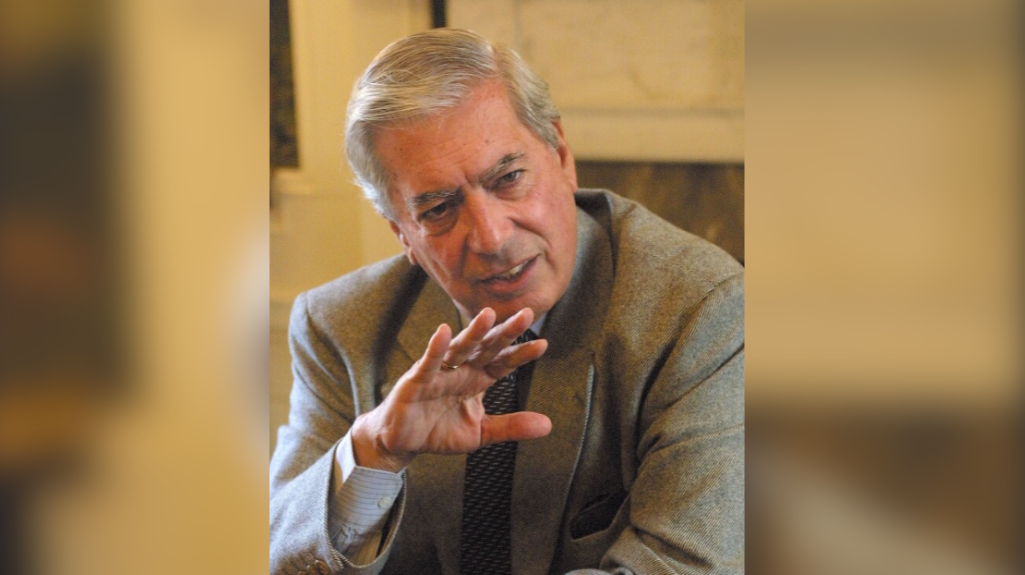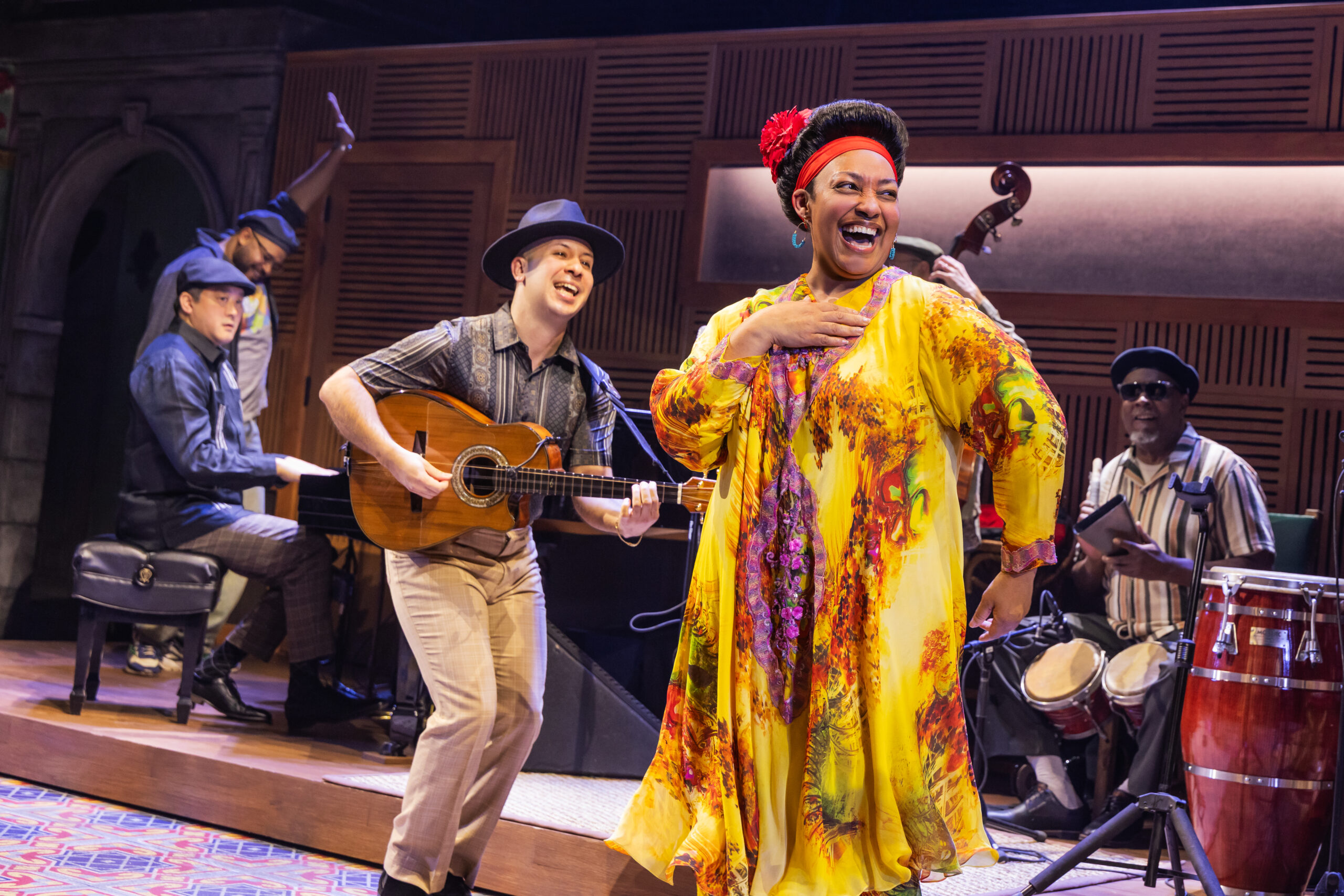Suwon Lee's Performance at Americas Society is Highlighted by Artishock magazine
Suwon Lee's Performance at Americas Society is Highlighted by Artishock magazine
The event was part of the programming related to the exhibition The Appearance: Art of the Asian Diaspora in Latin America & the Caribbean.
This article was originally published in Spanish.
In her debut public performance, titled Dictée/Exilée, Suwon Lee (Caracas, 1977) confronts the impossibility of giving voice to the entirety of the migrant experience. Last November, as part of the Americas Society Performance Series, the Korean-Venezuelan artist stood before a white screen, illuminated by a projector displaying the words “Re / Dis / Appearing.”
These words introduced a 25-minute photographic montage, in which more than 380 images of Venezuela’s emblematic landscapes, flora, and fauna were projected while the artist’s body faded into the images. Meticulously reciting words alluding to her diasporic condition, Lee synchronized her voice with each image transition, constructing a spoken portrait of her homeland that simultaneously evoked its absence.
The journey through words and images began with the Maternidad Santa Ana, the hospital where Lee was born, unfolding as a constant back-and-forth between intimate memories and places of collective significance for Venezuelans. Through her narration, she traced an itinerary through Caracas’ architectural landmarks, such as El Helicoide and La Previsora; Caribbean beaches with white sands like Cata and Tucacas; national commercial brands like Farmatodo and Traki; the majestic tepuis of Roraima and Matawi; and beloved animals like the guacamaya (macaw) and morrocoy (tortoise).
Artist Marcos Arévalo collaborated on the creation of the visual effects and sound design, working with images sourced from the web and Lee’s personal archive. The music, improvised live by Arévalo and adjusted to the visual narrative, served as an ambient soundscape of birds and frogs, resonating bells, and prolonged musical notes.
The performance originated from an exercise in free writing, in which Lee wrote down words and fragments that identify her as Venezuelan—a criollo vocabulary that, according to the artist, highlights the cultural clash perceived by others when they see her Asian appearance but hear her speaking with a Venezuelan accent and slang.
As part of the exhibition The Appearance: Art of the Asian Diaspora in Latin America and the Caribbean, the performance Dictée/Exilée explores the diasporic condition, where identity is constantly negotiated between assimilation into a new culture and the distance from one’s ancestral roots. This tension brings forth the dual expectations placed on immigrants—to both integrate and maintain distinction within the cultures they navigate.
By cataloging words and fragments emerging from her memories, Lee confronts the risk of forgetting: the names of streets and everyday elements that once defined her life in Venezuela are now on the margins of her memory since her emigration in 2016. As Lee explains, “In some way, this process became a memory game, an emotional and nostalgic exploration to reconstruct the spaces that have defined my identity as a Venezuelan but which I no longer have access to since I left the country.”
For Suwon, who has lived in self-imposed exile for eight years, this physical dislocation translates in Dictée/Exilée as a visual fracture of memory, a disconnection between the present body and the remnants of what was once familiar.
The color transitions, framing, and visual distortions of the projection allude to a nostalgic memory emerging as if from a tunnel: recollections that vanish just as they appear, pixelated or blurred, rarely finding a clear or definitive form. The visual effects also correspond to the altered archival images, whose graininess and discoloration are nothing more than the marks left by time. As the images twist and distort in the projection, Lee’s firm cadence resists the dissolution of those memories, reflecting the experience of the Venezuelan diaspora in the face of unprecedented displacement and political crisis. Drawing inspiration from Korean-American artist Theresa Hak Kyung Cha, Lee continues a legacy of artistic experimentation in which performance and text interact to address the tensions between migration and diasporic visibility. In her work, Lee incorporates texts from Cha’s books, such as Dictée (1982) and Exilée/Temps Morts (2022), along with historical recordings.
Through the projection of words and phrases such as “Frontier / admission / access / appearance” and “Be gone / leave no trace / be lost to view / pass out of sight,” the piece reflects the tension between cultural assimilation and the erasure of native identity that follows exile—a theme also present in Cha’s work.
Just as Cha explored the stagnation of exile—an experience she termed temps morts (dead time)—Lee’s performance captures the weight of suspended time and a different kind of immobility. Through her recitation, Lee not only maps out a Venezuela etched in her memory but also the bureaucratic and systemic barriers that define her diaspora, redirecting her recitation toward administrative and institutional markers: “The embassy / the birth certificate / the passport / the ID card / the criminal record / the legalization / the apostille / the annulment.” The performance closes with the names of the country’s largest prisons, powerful symbols of political repression and authoritarianism.
For Lee, “These prisons represent the state of oppression in which we are trapped in the present, giving the ending a significant weight and a reminder of our reality.” Lee’s extended vocalization becomes a mechanism to preserve fragments of her homeland’s cultural and linguistic memory amid her physical separation. More than a catalog or listing of emblematic places, her recitation frames a continuous negotiation between what is lost, what is remembered, and what is transformed—where memory is constantly redefined through distance and time. Dictée/Exilée evokes this tension between the impossibility of fully “dictating” what has been left behind and the persistent urgency to do so in the face of displacement and the weight of exile.
The Venezuelan-Korean artist will make their debut performance as part of the Art at Americas Society's Performance Series.










